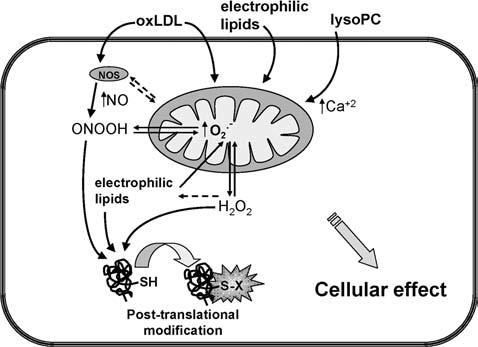Figure 3.

Mechanisms of mitochondrial-dependent redox signalling OxLDL, electrophilic lipids or lysoPC induce O2•− generation in mitochondria that may then be converted into H2O2. OxLDL also activates NOS and increases production of NO; in the presence of available O2•−, oxLDL may contribute to peroxynitrite formation. In addition, lysoPC can elevate intracellular calcium levels. Furthermore, ROS, RNS and electrophilic lipids contribute to the post-translational modification of protein thiols (protein-SH) to form protein-S-X. Moreover, it is postulated that oxidative stress increases the intracellular pool of electrophilic lipids.
